When Elon Musk’s SpaceX – short for Space Exploration Technologies – got into the rocket game, it promised reusability, lower launch costs, and easier access to space. Over the last few years the company has taken steady steps to making good on that promise, thanks in large part to the success of its Falcon 9 rocket.
The Falcon 9 is a two-stage rocket that’s designed to launch satellites, and eventually crewed spacecraft, into orbit. It stands 69.9m tall, weighs 549,054kg, and generates 7,607 kilonewtons of thrust at take-off, which can send 22,800kg into orbit around the Earth. Alternatively, it could send 8,300kg to Mars, although it hasn’t launched anything to the Red Planet just yet. Nonetheless, Mars is SpaceX’s ultimate goal – Elon Musk has made no secret of the fact that he wants to be the one to land humans on our planetary neighbour.
In the meantime, SpaceX has more than 40 Falcon 9 missions into Earth orbit. The rocket made history in 2012 when it became the first privately launched vehicle to successfully send a resupply mission to the International Space Station, and has since added reusability to its roster. This marks another step towards SpaceX’s goal of sending humans into orbit from American soil, something the world hasn’t seen since the Space Shuttle’s final flight in 2011. But it’s not just about NASA missions for the moment. SpaceX’s launch manifest shows a diverse roster of clients including the US Air Force, national security missions, and commercial satellite launches. All in all, SpaceX is positioning itself to be a leading force as we enter the new era of commercial spaceflight.
Falcon 9 relaunch
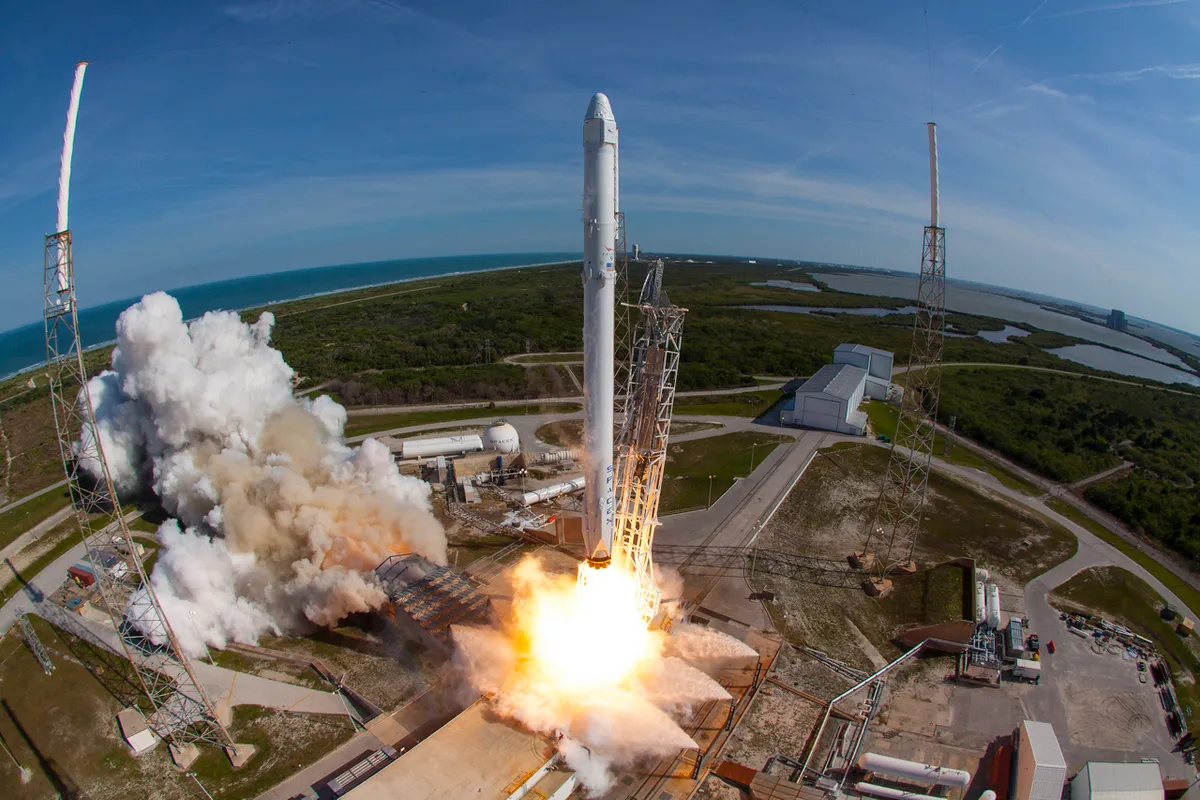
In April 2014, SpaceX signed a 20-year lease to use NASA’s launchpad 39A, the very same launchpad from which every Apollo mission (other than Apollo 10) and a host of Space Shuttle missions launched. To support the Falcon 9 launch, SpaceX had to customise the pad. It refurbished the sound-suppressing deluge system, which uses water to protect the rocket from its own acoustic energy at the moment of launch. It also replaced electronic components, power and plumbing lines, and upgraded the liquid oxygen storage system that is used to fill the rocket’s tanks before launch.
Octaweb mating
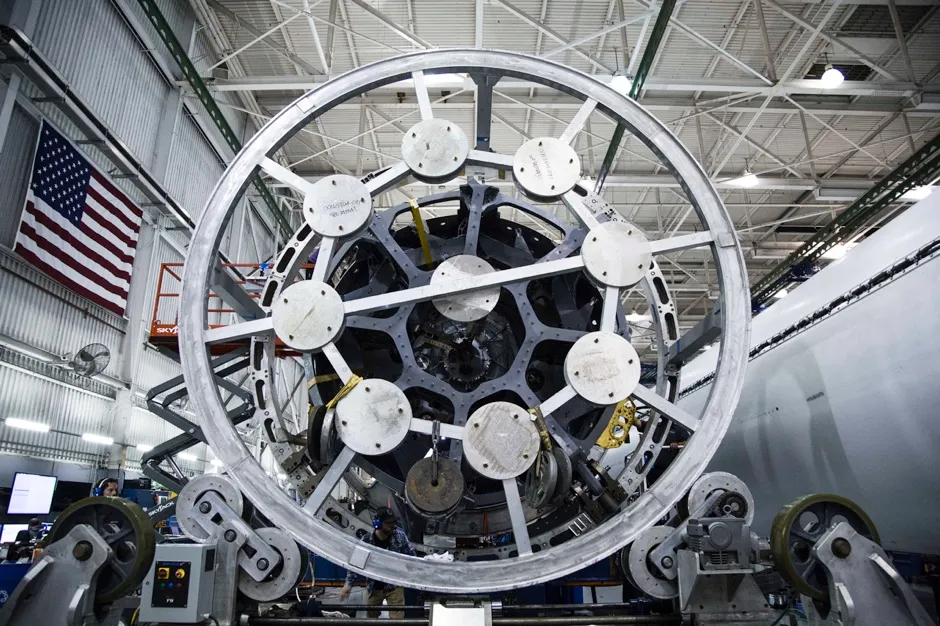
The metal Octaweb structure that houses the Merlin engines is vital to the Falcon 9’s first stage. Earlier versions of the rocket had nine engines arranged in three rows of three. With the Octaweb, eight engines are clustered in a circle around a central one. The different engine arrangement is more than just aesthetic. The Octaweb reduces the length and weight of the Falcon 9 thrust structure, simplifying the rocket’s design and assembly. Streamlining the manufacturing process ultimately keeps launch costs down.
Interstage
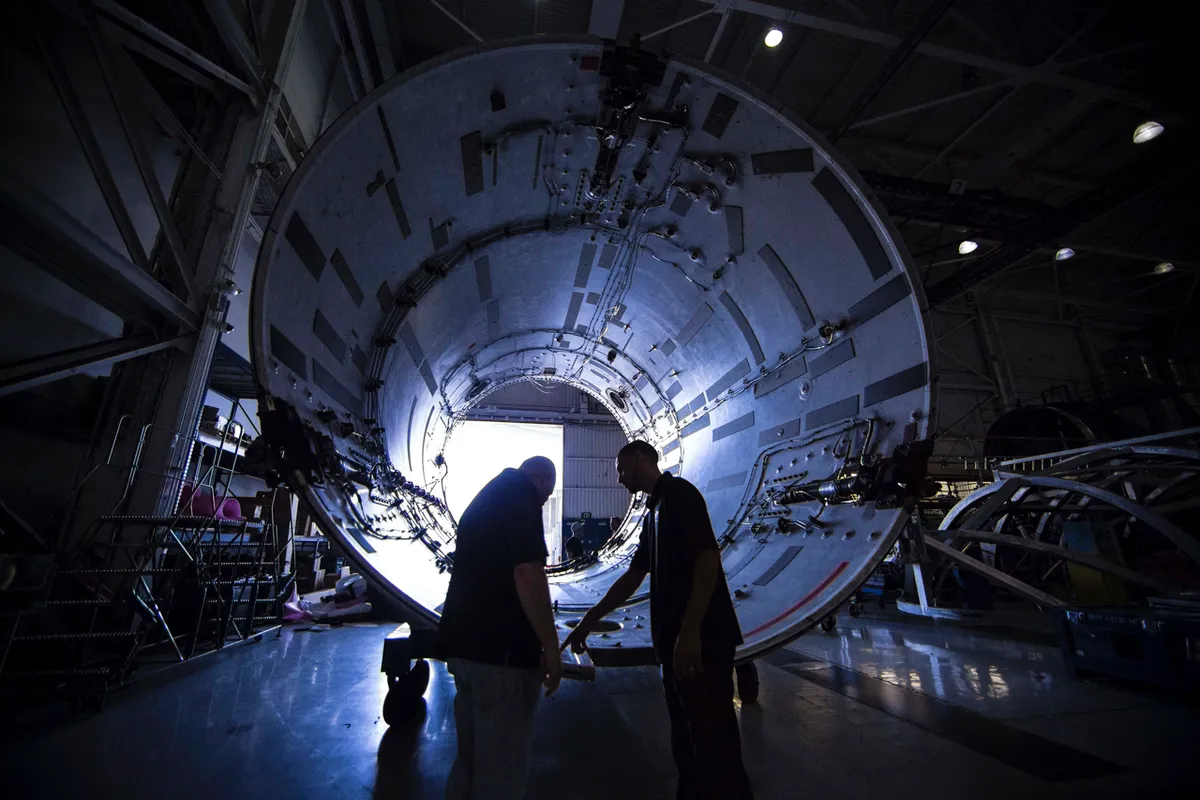
An interstage is vital to any multi-stage rocket. This section connects the first and second stages and also houses the engine of the second stage, protecting it during the first phases of flight. At the right moment, the interstage separates the two stages, allowing the second stage to fire safely. This is called the ‘moment of staging’.
Separating rocket stages can be a tricky business, but the Falcon 9 makes it simpler. While the majority of rockets use a complicated pyrotechnic system of explosive bolts to separate stages, SpaceX uses an all-pneumatic stage separation system. This system can be tested on the ground, and also means staging is less jarring to the rocket.
Merlin engine
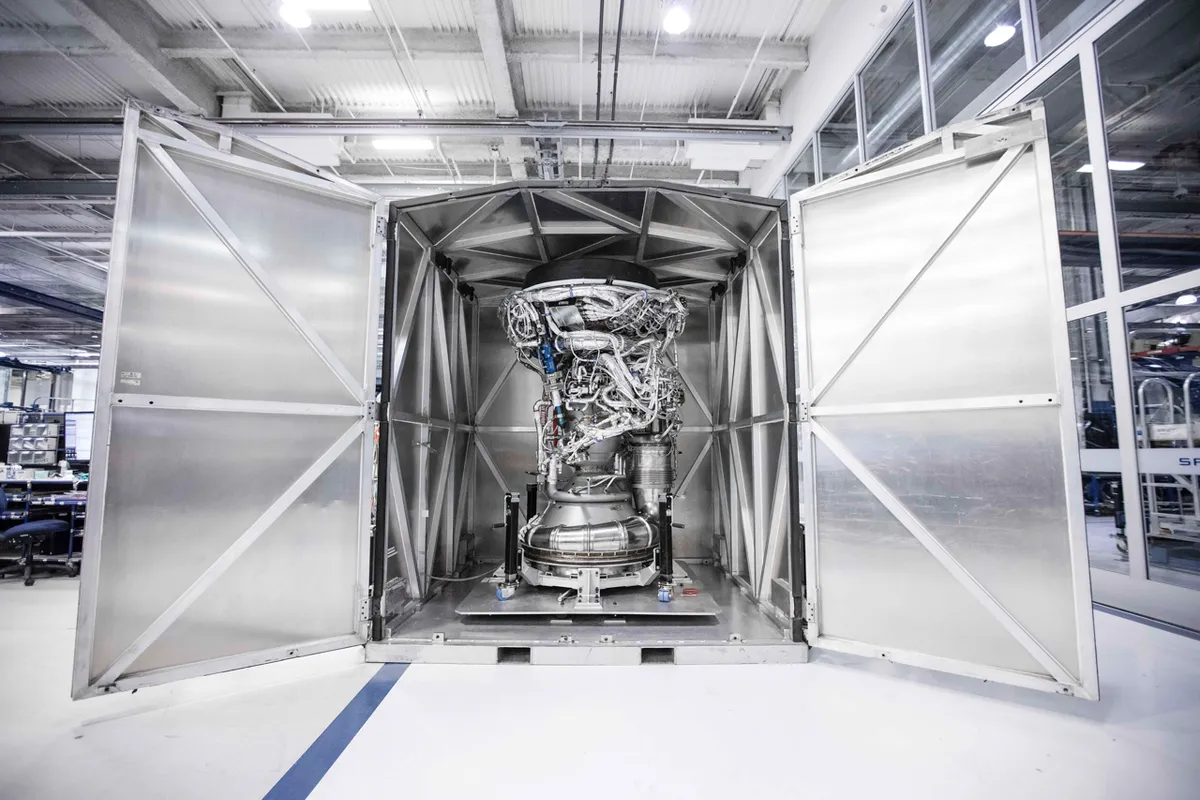
The power behind the Falcon 9 is the Merlin engine, which is built in-house by SpaceX. The rocket boasts nine of these engines clustered together in the first stage, while the second stage contains a single Merlin that’s modified to fire in the vacuum of space. These engines burn a combination of rocket-grade kerosene called Rocket Propellant 1 and liquid oxygen. On a typical Falcon 9 launch, the first stage engines burn for 162 seconds, and the second stage engine burns for 397 seconds.
The Merlin engine is incredibly powerful and one of the most efficient engines ever built. Having nine of them in the first stage also offers some built-in safety. On other rockets, if an engine fails during launch, the lost thrust can destroy the payload’s chance of successfully reaching orbit. But the Falcon 9 is designed so that two of the nine Merlin engines in the first stage can fail and the launch won’t be affected. The healthy engines can burn longer, picking up the slack to save the mission.
Horizontal Integration Facility
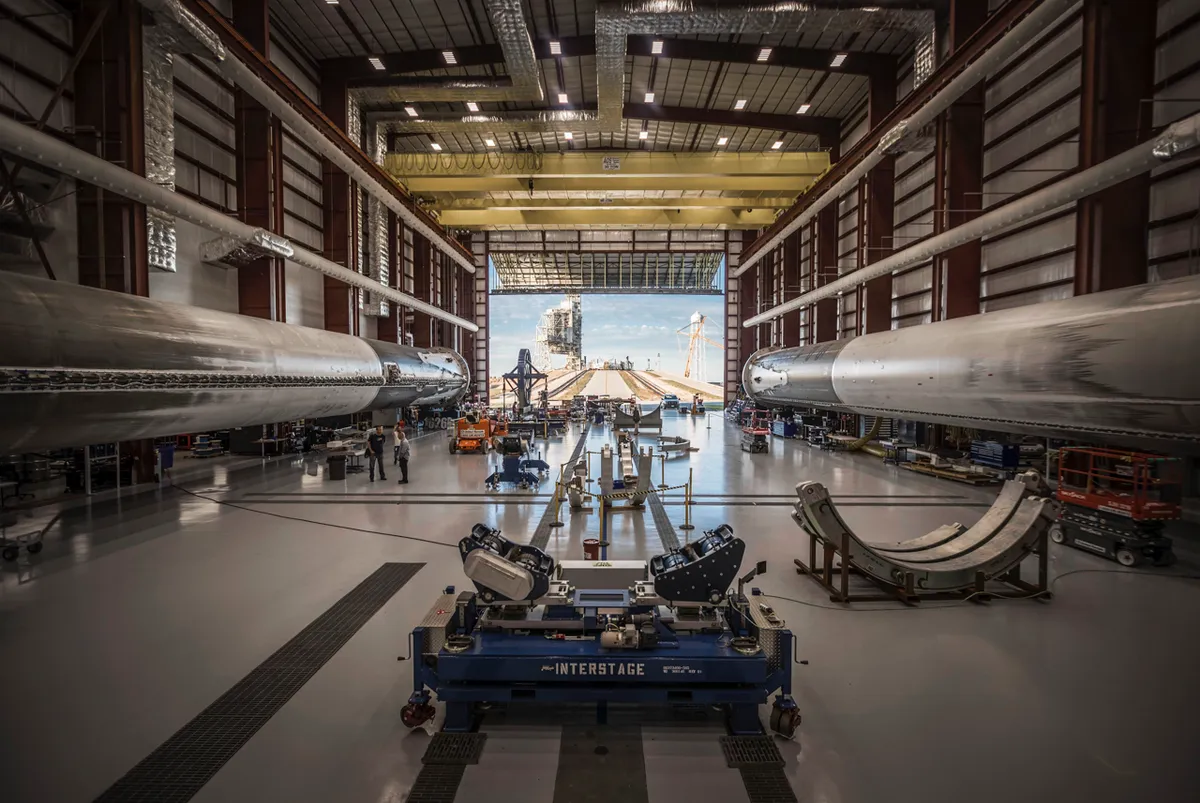
SpaceX doesn’t build the Falcon 9 in Florida, it’s just assembled there. Most of the rocket’s parts are built elsewhere, notably on the other side of the US in the company’s factory in Hawthorne, California. This means the components, including fuselages and engines, need to travel around the US by truck to various test stands before eventually ending up at NASA’s Kennedy Space Centre in Florida.
Once in Florida, the pieces are mated in SpaceX’s custom-build Horizontal Integration Facility, a large hangar within sight of launchpad 39A.
First stage landing
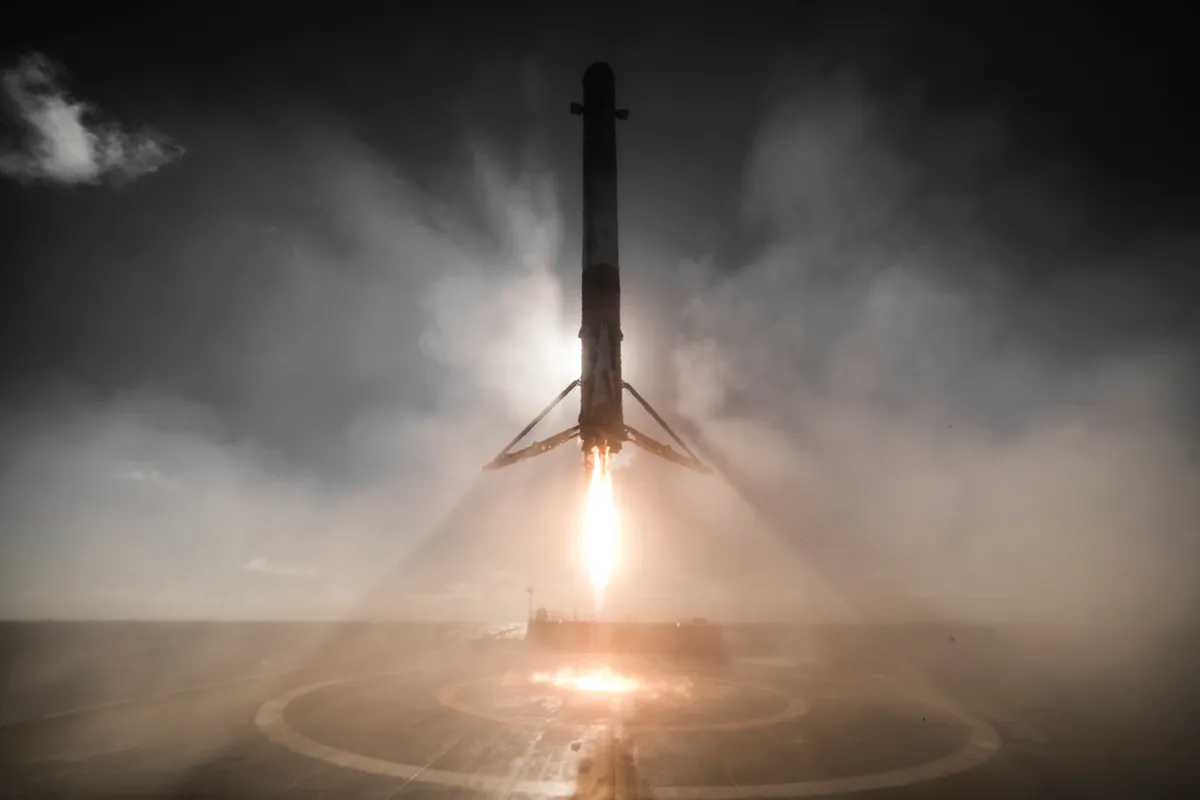
The most exciting part of any Falcon 9 launch might be the landing, specifically that of the first stage onto a floating barge. The Falcon 9’s first stage includes four small carbon-fibre landing legs stowed flat against its fuselage. After the rocket goes through staging, the first stage begins its fall through the atmosphere. Cold gas thrusters near the top flip the rocket around so it’s upright. Then the stage engine fires briefly, just enough to slow its fall. As the stage approached its target, the legs deploy. In the very final phases of its descent, three of the nine Merlin engines fire one last time for what SpaceX calls the ‘boostback burn’. The stage slows even further, almost hovering as it makes a soft touchdown. This landing sequence entirely automated, with the rocket stage responding to real-time data.
Raptor Engine
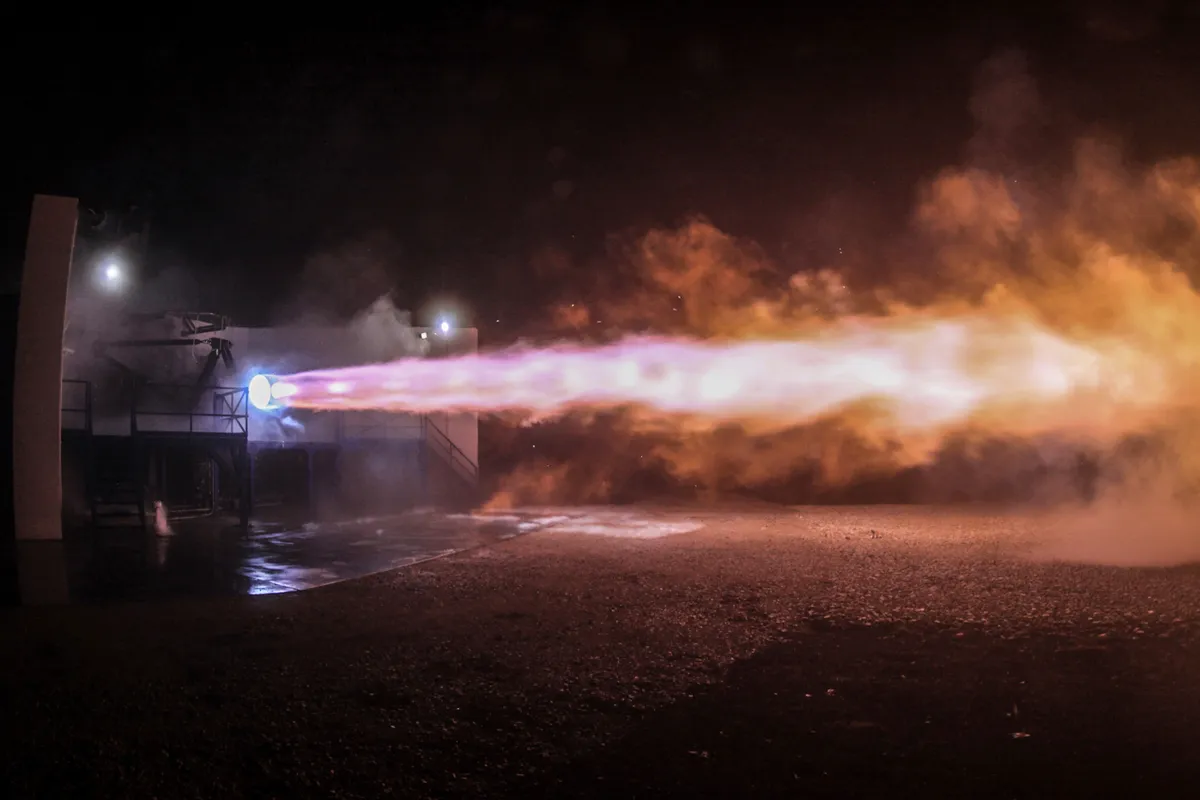
So far, the Raptor has not flown, and has only been successfully test-fired on the ground. Nonetheless, SpaceX has big plans for it. This is the engine that will power eventual missions to other planets, starting with Mars. The company recently unveiled its design for a planned interplanetary spacecraft, and in its current incarnation uses a whopping 42 Raptor engines in the launch vehicle’s first stage to get this heavy spacecraft off the ground. But before it launches to Mars, Raptor will make its debut on an upgraded version of the Falcon 9.
Falcon 9 post-flight
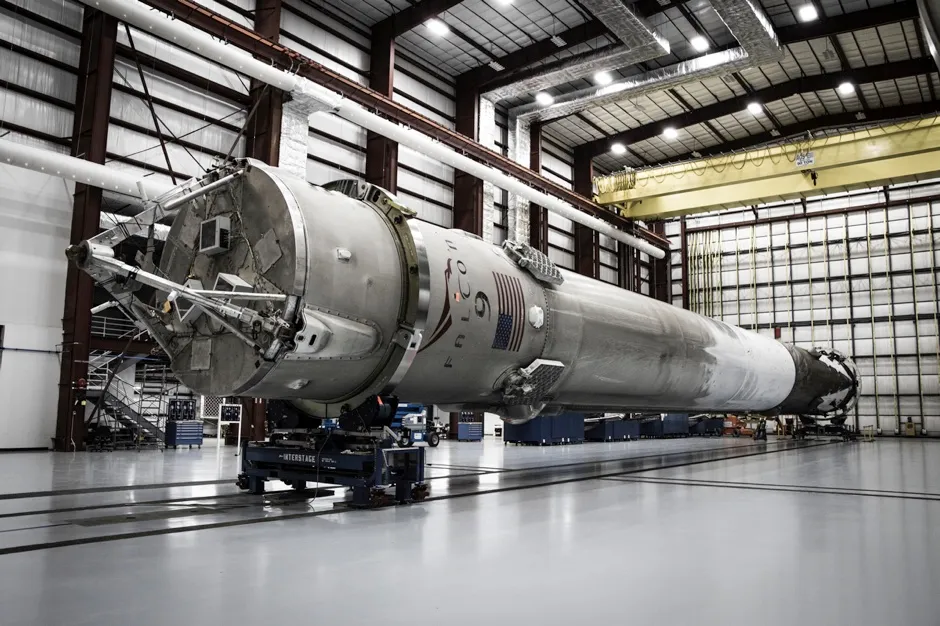
After its successful landing, the Falcon 9’s first stage is returned to the Horizontal Integration Facility where it can be checked out, refurbished, and readied for another launch. Reusing the stage is much cheaper than building a new one for every launch. The SES-10 mission in March 2017 was the first time a core stage of an orbit-capable rocket has been reused, and the cost was “substantially less than half” of what it would have cost to build a brand new stage.
Elon Musk has likened single-use rockets to single-use aeroplanes. If an airline had to scrap a Boeing 747 after every flight, then the cost of flying would be prohibitively expensive for the average traveller. But aeroplanes aren’t single-use, they’re refuelled for another flight. If a rocket can be refuelled like an aeroplane, then the enormous cost of a spaceflight could drop to a fraction of what it is now. And imagine the implications of that!
Subscribe to BBC Focus magazine for fascinating new Q&As every month and follow @sciencefocusQA on Twitter for your daily dose of fun science facts.

